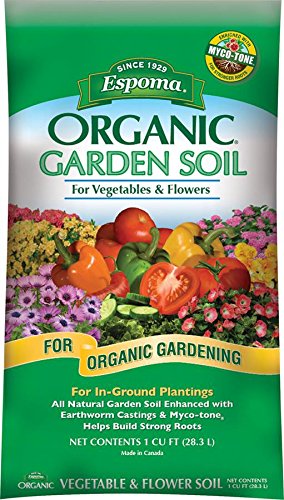Peas are an early season vegetable that does well in most conditions while also improving your gardens soil fertility as they grow.
Buy Pea Seeds Online
| Image | Name | Rating | Shop |
|---|---|---|---|
 | Organic Pea Seeds Garden Pea | ||
 | Burpee Super Sugar Snap Pea Seeds 300 seeds | ||
 | Mammoth Melting Sugar Pod Snow Pea Garden Seeds – 1 Lbs – Non-GMO, Heirloom |
Pea Varieties
You can purchase pea seeds from numerous suppliers in both “runner” and “bush” pea varieties. If your garden space is limited, runner peas are the best choice since they make use of vertical space; however, you will need a trellis.
Bush Peas
Bush varieties are a great alternative for those who have the extra space and do not mind doing some bending, in order to reap their harvest.
Do Peas Need Full Sun to Grow?
Peas need full sun to grow to their full potential, so make sure the location in which you plant them has direct sunlight for most of the day.
Pea Soil

Pea plants do not tolerate heavy, water-logged soils, so make sure the soil (Buy Online) is rich and loose, as they will do poorly in clay or sandy soils. Make sure, if you have sandy or clay soils, that you add compost or other soil amendments, in order to bring your soil conditions as close to a crumbly loam as possible.
Pea Fertilizer Requirements

Pea plants do not require as much fertilizer as other plants, but a light application of a low-nitrogen fertilizer is recommended. Adding too much nitrogen can lead to lush foliage, but limiting yields, so it is best to apply a 10-20-10 fertilizer (Buy Online), which is high in phosphorus, but low in nitrogen, in order to encourage a good harvest.
Planting Peas

When Should I Plant Peas?
The best time to plant your pea seeds is when the soil temperature is at least a stable 48 degrees Fahrenheit (9 Celsius); otherwise, germination will be spotty. If possible, wait until the soil temperature is 55 degrees Fahrenheit (25 Celsius), as this will ensure higher germination rates.
Pea Plant Trellis
If you plan on planting a runner variety, you can set the trellis up before planting runner pea seeds; and if you are planting a bush variety, you will not need any support structure.
Pea Plant Spacing
The seeds should be planted 1 to 2 inches (2.5 to 5 cm) deep and each seed should be spaced 2 inches (5 cm) apart, in rows 12 inches (30.5 cm) apart. If you are growing peas in an intensive or raised bed, you can plant the seeds 7 inches (17.8 cm) apart, equally spaced.
Watering Pea Plants

To keep your pea plants thriving throughout the growing season, water your plants in the morning, allowing ample time for the soil to dry throughout the day. Pea plants are very sensitive to stress and will drop their blossoms if placed under heat or moisture stress. Be sure to keep the soil at a consistent moisture level, about 1 inch (2.5 cm) of water per week is sufficient.
Fertilizing Pea Plants
Fertilizer should be used very minimally throughout the growing season, as pea plants are able to acquire nitrogen through the air, via the symbiotic bacteria growing on their roots. If signs of nutrient deficiency do appear, then a mild liquid fertilizer should be applied until the symptoms are remedied. If your soil is very sandy, it might be necessary to apply nitrogen to the plants early on in the season and before the first buds form.
Pea Care & Harvest

Pea Plant Cultivation
Weeds can be especially problematic early on when the pea plants are small, which can hinder their ability to emerge and reduce the seedlings’ access to nutrients and moisture. It’s best to hand weed around the plants very carefully, so as not to disturb or damage the seedlings’ shallow roots. Limit weeding to dry periods, in order to maintain good soil structure and to keep the spread of plant diseases, such as white mold, to a minimum.
Peas Pests

Throughout the season, keep an eye out for pests, such as aphids, cutworms, and Japanese beetles. If the problem is small, just pick off the offending insects; otherwise, certain organic insecticides can be used, such as Bacillus Thuringiensis (Buy Online), to combat the infestation.
When are Peas Ready to Pick?
Harvesting peas can be done in different stages of maturity. You can pick them before the peas fill out, or wait until they mature for shelled peas. If you want to harvest immature pea pods, wait until the pods are have reached 2 to 4 inches (5 to 10 cm) and the seeds are still immature.
Harvesting Peas
Harvesting immature pea pods is usually reserved for snow pea varieties. Snow Pea plants will produce a tender pod that can be added to a salad and stir-fried. Standard, garden peas are generally allowed to mature until the peas have almost completely matured.
Make sure not to let the peas ripen too much, or the peas will be hard and unpleasant to eat. Also, if you let the pea pods fully mature, then this will limit further production of further pods on the plant, as the plant will dedicate its energy to fully ripening those pods left to mature.
Storing Peas
Snow peas are best eaten fresh, while shelled peas can be stored in the refrigerator for a few days. Shelled peas can also be blanched, for freezing or canning, and then stored for a year.






